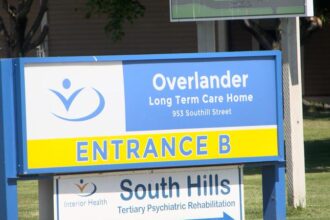Waiting rooms packed to capacity, anxious pet owners desperately calling multiple clinics, and veterinary staff working to the point of exhaustion — this is the new normal across Saskatchewan as a critical shortage of veterinarians pushes the province’s animal health system to its breaking point.
“We’re drowning,” admits Dr. Emma Richardson, who operates a small animal clinic in Saskatoon. “Most days, we’re booked solid three weeks in advance, and that’s just for routine appointments. Emergencies get squeezed in somehow, but it means longer hours and less time per patient than I’m comfortable with.”
The crisis has been building quietly for years, but the pandemic accelerated existing problems. Statistics from the Saskatchewan Veterinary Medical Association reveal the province is short approximately 80 veterinarians — a staggering figure for a profession that was already stretched thin. This shortage affects not only household pets but also livestock operations critical to the province’s agricultural economy.
Rural areas are experiencing the most severe impacts. In communities like Swift Current and Melfort, some producers must drive more than two hours to access veterinary care for their livestock. Meanwhile, urban clinics in Regina and Saskatoon are turning away new patients entirely, reserving their limited capacity for existing clients.
“I’ve called seven different clinics trying to find someone who could see my dog for an ear infection,” says Moose Jaw resident Catherine Lowry. “Three weren’t accepting new patients, two couldn’t see him for over a month, and the others didn’t even return my calls. I ended up driving to Regina for care, which isn’t sustainable.”
The shortage stems from multiple factors, according to industry experts. Dr. Mark Jacobson, president of the Saskatchewan Veterinary Medical Association, points to a significant demographic shift within the profession. “We have more veterinarians retiring than entering the profession. Additionally, newer graduates often prefer work-life balance over the demanding schedules that were once common.”
This generational shift coincides with skyrocketing pet ownership rates. The Canadian Animal Health Institute estimates that pet ownership increased by nearly 20 percent during the pandemic, adding unprecedented demand to an already strained system.
The Western College of Veterinary Medicine at the University of Saskatchewan, which trains most of the province’s veterinarians, has responded by increasing enrollment, but graduates take years to enter the workforce. Dr. Samantha Cooper, the college’s associate dean, acknowledges the challenge: “We’re working to expand our capacity, but training qualified veterinarians takes time. This isn’t a problem with a quick solution.”
Financial pressures compound the issue. Unlike human healthcare, veterinary medicine receives minimal government support, with costs borne primarily by pet owners and practitioners. Rising operational expenses, equipment costs, and inflation have pushed fees higher, creating affordability concerns for many pet owners.
The mental health toll on veterinary professionals has been severe. Dr. Richardson notes that burnout rates among her colleagues have never been higher. “We’re seeing unprecedented levels of stress, anxiety, and depression in the profession. Many of my colleagues are considering leaving practice altogether, which would only worsen the shortage.”
The provincial government has begun exploring solutions, including retention incentives for rural practitioners and expanded roles for veterinary technologists. However, stakeholders argue more comprehensive action is needed.
“We need coordinated effort from government, educational institutions, and the profession itself,” says Dr. Jacobson. “This includes financial support for rural practices, streamlined licensing for qualified international veterinarians, and public education about appropriate veterinary utilization.”
Some clinics have implemented innovative approaches, including telehealth services for minor concerns and wellness plans that distribute costs over time. However, these measures only partially address the fundamental supply-demand imbalance.
For Saskatchewan residents and their animal companions, the situation remains precarious. As winter approaches, many wonder if emergency veterinary services will be available when needed. The question now facing the province is whether this essential healthcare service will receive the attention and resources it requires before the system breaks entirely.
What will it take for us to recognize that animal health is not merely

























